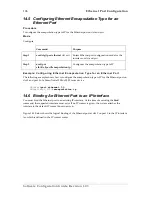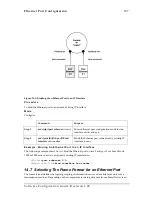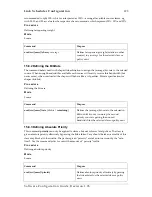
116
Link Scheduler Configuration
The packet classification has to be defined as a first step. In SmartWare the access control list are
used to tag packets to a certain class.
Note:
Keep in mind that the class local-default comprises all other classes, which are not explicitly
stated in a service policy profile.
15.5.2 Creating an Access Control List
The procedure to create an access control list is described in detail in Chapter 19, “Access Control
List Configuration”, later in this guide.
At this point an only exemplary situation is described that shows the necessary steps to tag any
outbound traffic from a Web server, since this is used for the scenarion depicted in Figure 15-3. In
this scenario the web server is regarded as a single source host when defining the access control list.
Therefore the IP address of the Web server is used as source address in the permit statement of the IP
filter rule for the access control list.
Figure 15-2: Scenario with Web Server Regarded as a Single Source Host
A new access control list has to be created. Since the access control list is used for tagging Web server
traffic, it gets the name
Webserver
. Moreover the IP filter of the access control list is used to define,
that any packets matching the filter belong to a certain class of service. In our example the class of
service that represents outbound Web related traffic is named
Web
.
You must pay attention to the fact, that access control list have an implicit “deny all” entry at the
very end. Therefore if any packet that does not match the first criteria of outbound Web related
traffic, would be dropped. This would be an improper behavior, because packets that are not related
to outbound Web traffic need to be further processed in the link arbiter. As a result a second access
control list entry is necessary that any other traffic is allowed.
Software Configuration Guide, Revision 1.03
Summary of Contents for SmartWare R2.00
Page 2: ......
















































